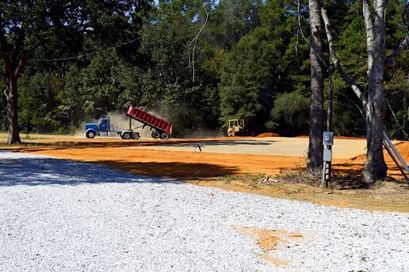Your business relies on equipment that performs consistently under challenging circumstances. An inadequately selected trailer transforms into a persistent source of aggravation, increasing repair expenses while restricting your capacity to serve clients efficiently.
Building teams, landscape professionals, and material transporters all encounter the same obstacle: locating equipment that manages substantial loads securely while providing years of reliable performance. Making a knowledgeable choice demands assessing multiple essential elements that establish long-term achievement and profitability.
Know Your Load Requirements (GVWR)
GVWR indicates the maximum safe load your trailer can handle. Surpassing this threshold poses significant safety risks and legal consequences while invalidating your warranty.
Determine your standard load masses precisely by consistently evaluating the heaviest substances you’ll haul. Concrete, asphalt, and moist earth are considerably heavier than dry substances such as mulch or waste. Account for seasonal fluctuations as well. Damp materials during spring may weigh notably more than identical volumes in summer. Maintain a safety buffer instead of maximizing weight capacities.
When assessing GVWR needs, consider future business expansion. Buying a trailer that satisfies only your present requirements could necessitate a costly upgrade earlier than expected. Nevertheless, excessive sizing raises fuel expenses and might mandate commercial permits in certain areas.
Look at the Frame and Build Quality
The framework functions as your trailer’s base, establishing longevity and dependability during intensive operation. Steel density, welding standards, and general construction influence durability and resale worth. When shopping for dump trailers, choose models with sturdy frames since insufficient construction results in early breakdown, costly maintenance, and hazardous conditions.
Review steel thickness specifications thoroughly. Heavier steel offers superior strength but increases weight. Seek continuous rather than spot welding, which generates vulnerable areas during stress. Cross-beam intervals and positioning influence load spreading and frame stability.
Evaluate the working environment when assessing construction quality. Corrosive environments near ocean water or chemical contact need improved protection using galvanising or specialised treatments. Farm uses may require protection different from construction applications.
Don’t Overlook the Hoist System
The hydraulic mechanism is the trailer’s most intricate element and a common breakdown location. System power must align with your GVWR specifications while delivering dependable performance in different situations. Insufficient systems can be difficult with heavy cargo, while excessive systems raise expenses without justification.
Single-action cylinders are less expensive but depend on weight and load movement for descent. Double-action mechanisms offer controlled descent but add intricacy and expense. Scissor lifts deliver superior stability and lifting strength but need more upkeep than telescopic configurations.
Assess pump positioning and shielding from harm. PTO-powered mechanisms supply greater force but need matching vehicles. Electric or motor-operated pumps provide flexibility but may face power restrictions. Consider alternative systems in essential uses where operational interruption expenses are significant.
Safety and Convenience Features
Modern safety equipment safeguards workers and observers while minimizing legal risk. Cover systems contain materials and satisfy numerous local regulations. LED illumination enhances visibility and outlasts conventional bulbs. Reflective strips and warning indicators improve safety during dim conditions.
Wireless controls enable workers to keep safe distances while unloading. Automated covering systems decrease physical effort and enhance coverage uniformity. Side barriers hold loose materials and boost practical capacity without surpassing weight restrictions.
When reviewing convenience options, evaluate maintenance ease. Lubrication locations should be readily accessible, and standard replacement parts must be changeable without major dismantling. Equipment compartments and anchor points improve flexibility and orderliness.
Endnote
Selecting the appropriate trailer demands weighing initial expenses against operational effectiveness and lasting resilience. Invest time in comprehensively assessing each element instead of concentrating exclusively on buying price. A carefully chosen trailer transforms into a dependable ally in your business expansion, while a rushed choice can generate years of expensive complications.










